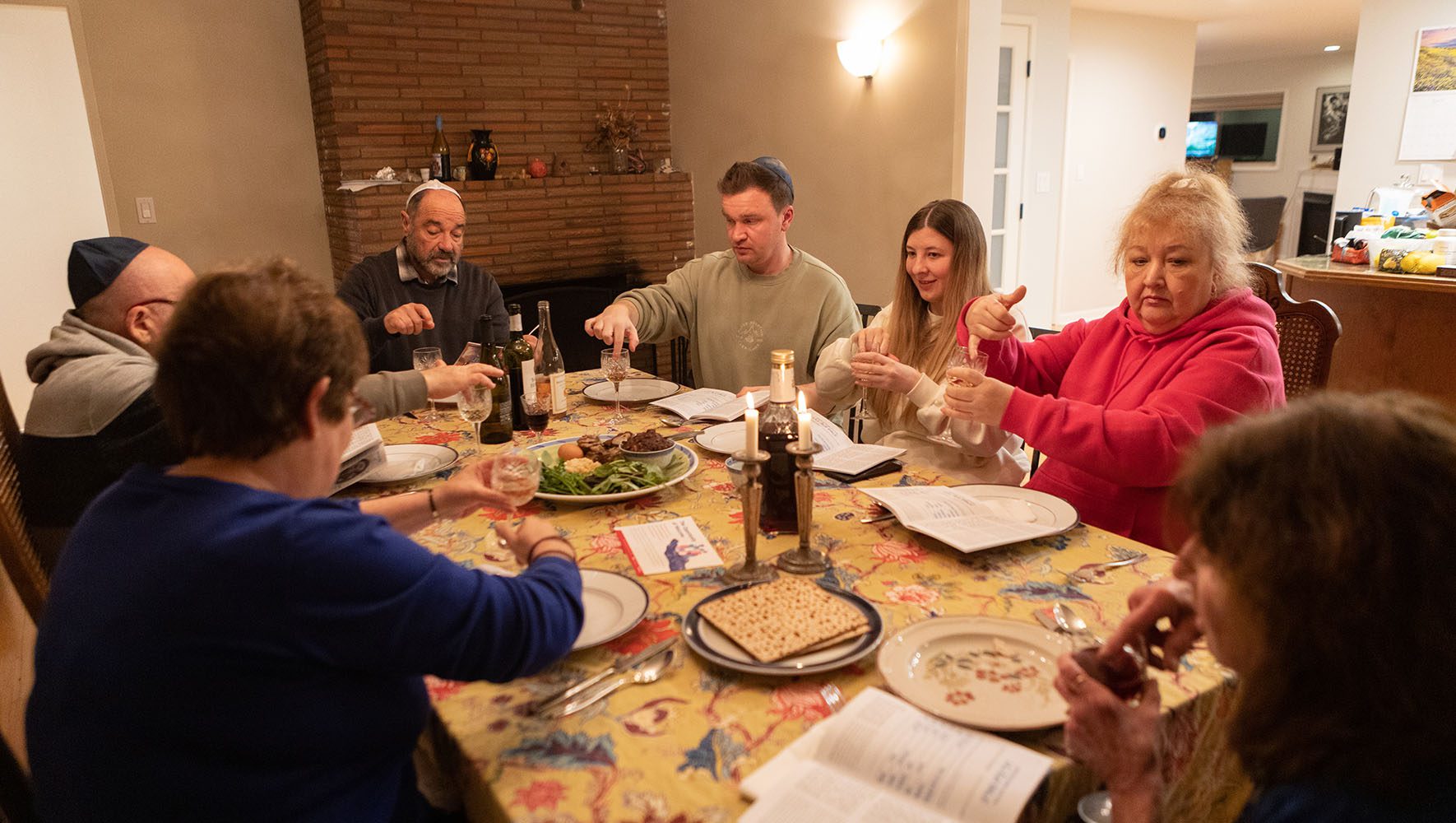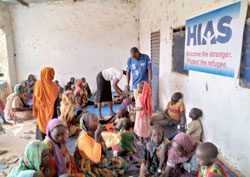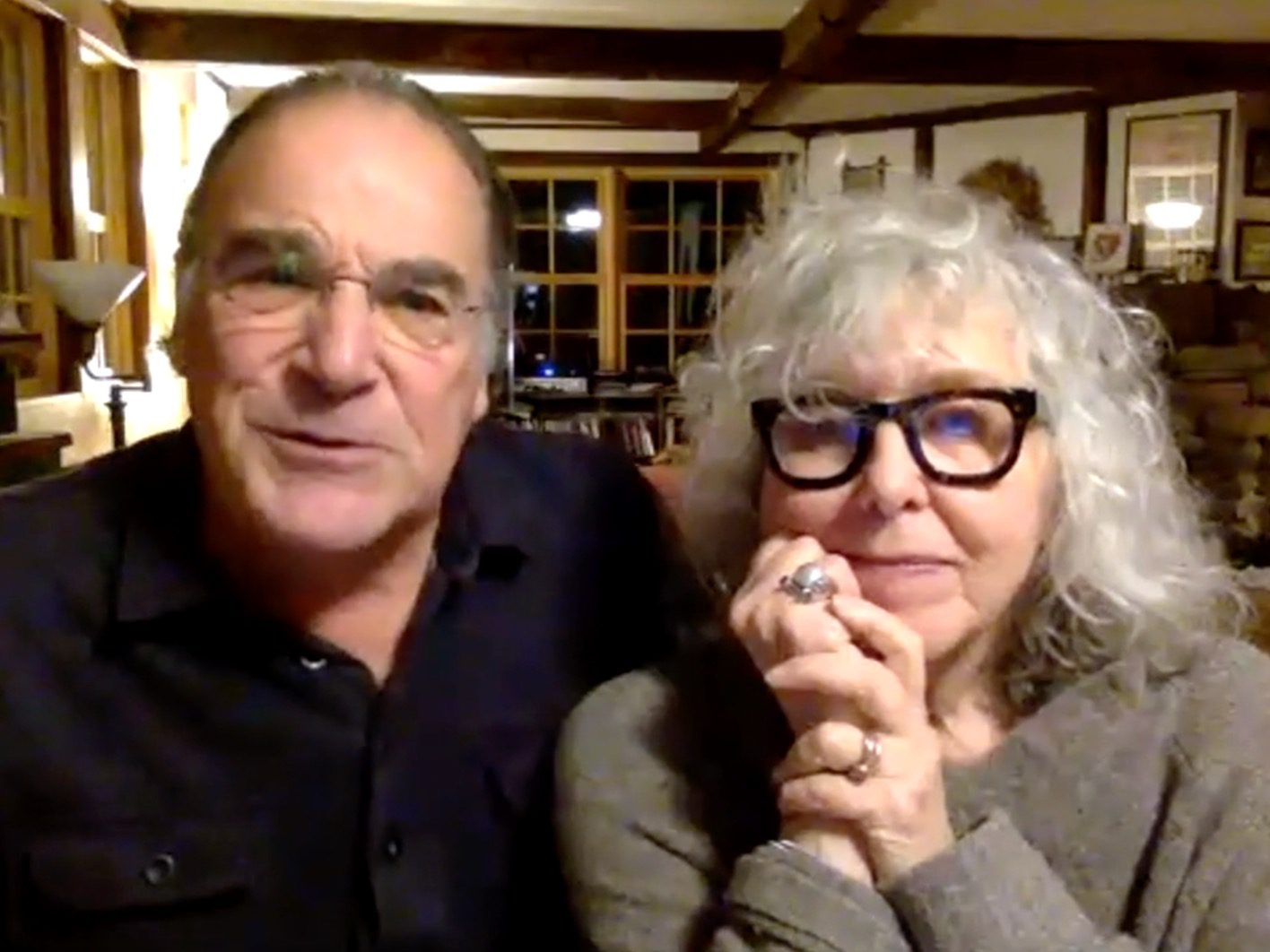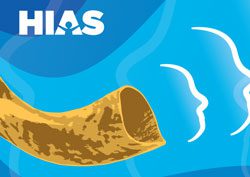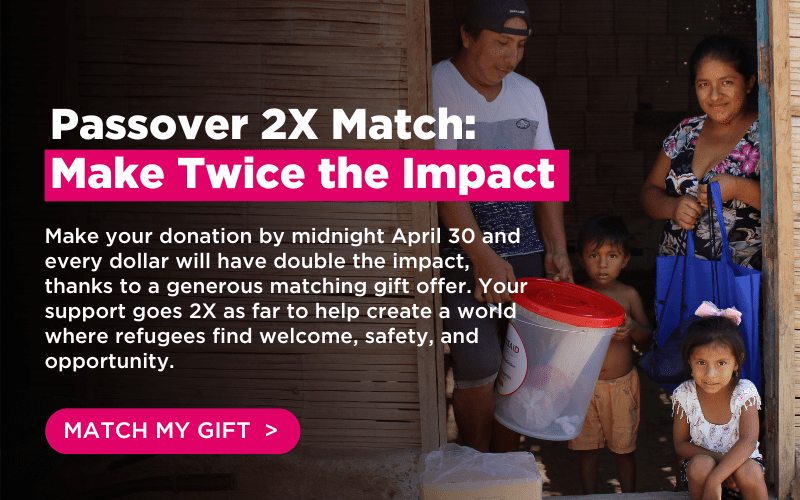Tulsa Synagogue Welcomes Refugees and Their Stories to Seder
By Ayelet Parness, HIAS.org
Apr 14, 2022
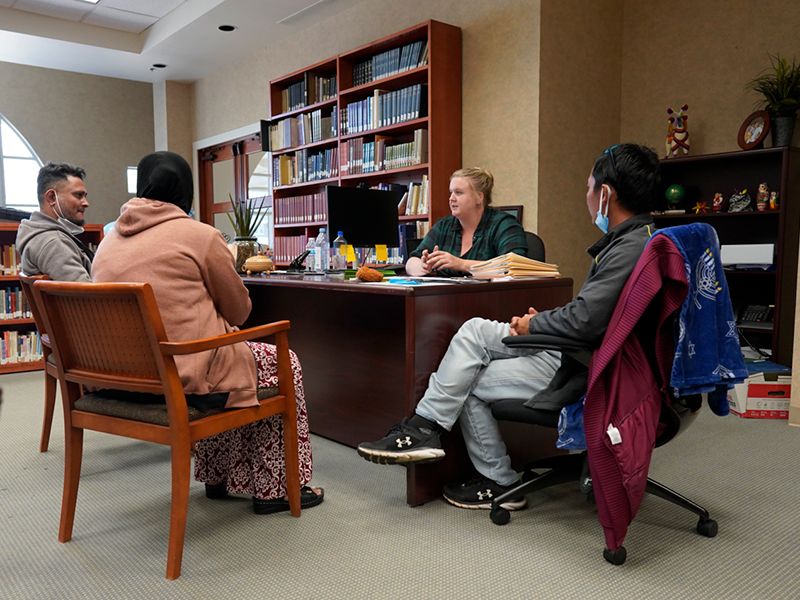
Congregation B'nai Emunah's resettlement staff meet with newly resettled Rohingya refugees in the synagogue's library, which serves as its resettlement office.
(Rabbi Daniel Kaiman)
This year’s community seder will look a little different at Congregation B’nai Emunah in Tulsa, Oklahoma. This Passover, the congregation’s first since becoming a HIAS Resettlement Partner, refugee stories will be woven throughout the historic narrative of the ritual.
“Pretty much everything we do involves refugees or the refugee experience these days,” said Rabbi Daniel Kaiman who, as the congregation’s rabbi, has been deeply involved in the resettlement effort. “This year, if you say ‘the synagogue does refugee resettlement,’ everyone nods their head with pride. Last Passover, people would have said, ‘well, what’s refugee resettlement?’”
It has been six months since the Tulsa synagogue welcomed the first family of Afghan evacuees to arrive through the new resettlement program, a moment captured in a HIAS video. Since then, the only synagogue among HIAS’ nationwide network of resettlement partners has learned a great deal, resettling 59 people in the first three months alone rather than the 50 they planned to resettle in their first year of operation.
Sadaf*, an Afghan evacuee, has been working with the congregation as an interpreter and case worker since January. She is happy to be able to support other evacuees as they navigate the difficulties of life in a new country – whether securing housing, accompanying them on shopping trips, or taking them to doctor's appointments. She also greatly appreciates the multicultural, supportive environment that the synagogue provides.
“I'm really happy working with the synagogue,” Sadaf said. “They are so supportive. We are working as a team with different cultures, religions. They don't have any problem with my religion, and they respect me a lot.”
All of the resettlement staff, including the two Afghan evacuees and the Burmese refugee who serve as interpreters and case workers at the synagogue, have been invited to attend this year’s seder so that they can become acquainted with more of the synagogue’s work. Sadaf is looking forward to it.
“I know that it is the Passover holiday, so the Seder is a kind of a meal there, and at that celebration they tell stories, they provide meals, they dance, they drink, and they pray,” said Sadaf. “I want to see how they celebrate it, because I don't know that much about it. I want to see their culture, I want to know their stories.”
Refugee stories will be woven throughout the liturgy of the seder, which will use a new haggadah that the synagogue recently completed.
“We have references to Odessa and Kyiv, and to Afghanistan, and to the Rohingya – we’re making reference to all of the different clients we now serve,” said Kaiman. “And we’re going to ask folks who have volunteered, donated, participated, and worked for the program to stand and to celebrate the work that we do and see this as a moment of connection.”
As part of the evening’s program, poet and literary translator Boris Dralyuk will be sharing his translation of “Darkness Invisible,” a poem by Ukrainian poet Yuri Izdryk, as a reflection on the current crisis in Ukraine. Dralyuk is Editor-in-Chief of the Los Angeles Review of Books – as well as a refugee from Odessa, Ukraine whose family received assistance from HIAS in 1991.
Dralyuk remembers Odessa as a hub for Jewish life and Jewish culture, even as structural and incidental anti-Semitism deeply impacted his family. He was eight years old when his family received a loan from HIAS to cover their flights out of the collapsing Soviet Union. Over 30 years later, when he and his wife, writer and translator Jennifer Croft, moved to Tulsa temporarily for her participation in the Tulsa Artist Fellowship, this connection to HIAS was what initially drew him to Congregation B’nai Emunah.
“I was especially moved by Rabbi Kaiman’s account of what the congregation had been doing to support refugee efforts,” said Dralyuk. “I was naturally thrilled to learn that the congregation here had such deep ties to HIAS. At the time, the focus was still the Afghan refugee crisis, just before the war in Ukraine. Since the day I spoke to the rabbi, of course, the war started, and that’s very close to home for me.”
The timing of Passover is especially poignant for Dralyuk, with the first night coinciding with the 31st anniversary of his arrival in the U.S. He has been moved to see the degree to which the support systems that helped his family – both HIAS and local Jewish organizations and congregations – have shifted their focus over the years from assisting Jewish refugees to helping any refugees in need.
“My refugee experience has informed my sense of Judaism as not just a cultural marker and not just a set of rituals, but as a set of obligations to mend what is broken and to leave the world a little bit better than you found it, if you can,” Dralyuk said.
Passover is a natural time to connect Judaism with the refugee experience. HIAS has been producing readings for the Passover Seder that connect the concepts since 2016, including the HIAS Haggadah and, new for this year, “Plague is a Verb,” a short reading that addresses current refugee crises and how we can take steps to change the actions of those who have “hardened their hearts” to refugees and asylum seekers.
“In every generation, you are to see yourself as if you yourself were the one who experienced the Exodus,” said Kaiman. “That's what all of the rituals of the Seder are reminding us to do. If Passover is successful, it does that. Passover is about reminding ourselves that we were refugees and giving ourselves the experience of being refugees.”
Find HIAS' Passover resources for your own seder here.
*Sadaf has requested to be known only by her first name for her protection.


